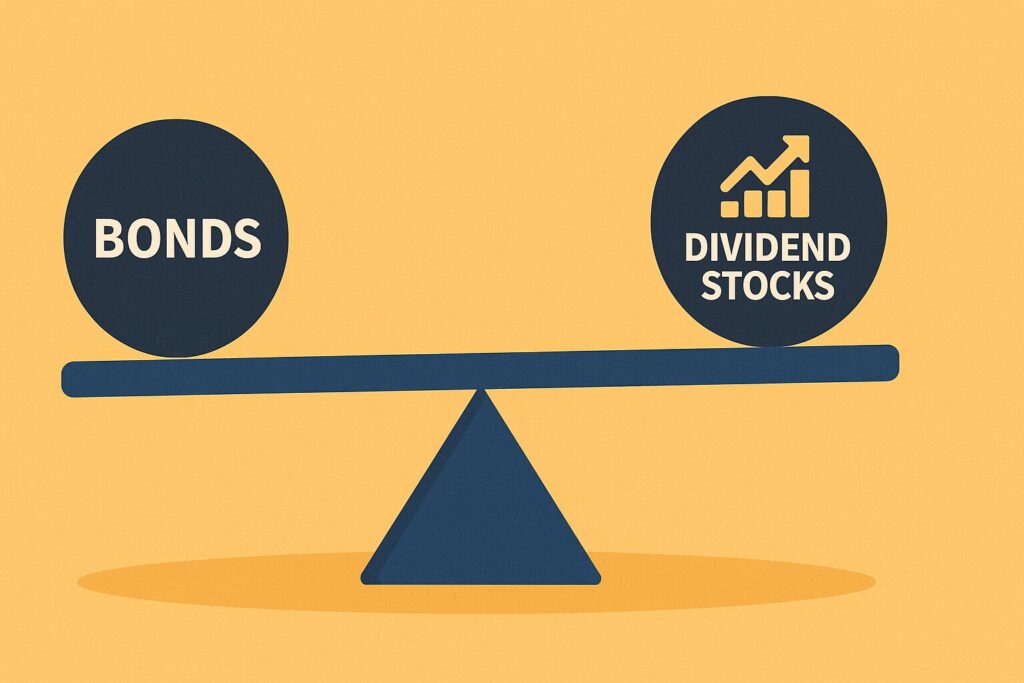
More income. More growth. Less worry.
For decades, bonds were the go-to choice for retirees seeking reliable income. And while bonds still have their place, many retirees are discovering that high-quality dividend stocks like Brookfield Asset Management (BAM) can deliver even better results—with less long-term risk than you might think.
If you’ve been relying on bonds, Treasuries, or CDs for income, this post may open your eyes to a smarter, more flexible strategy.
Let’s compare BAM to traditional bonds—and see why more income-focused investors are choosing dividend-paying stocks for retirement security.
✅ What Are Bonds Good At?
Let’s give bonds their due. They offer:
- Fixed income
- Principal protection (if held to maturity)
- Lower volatility than stocks
Bonds can be a solid foundation during market downturns and may offer peace of mind when you need stable cash flow. But they also come with limitations.
⚠️ The Problem With Bonds in Retirement
While bonds provide safety, they also come with drawbacks:
- Yields are historically low, especially after inflation
- Interest doesn’t grow—it stays flat year after year
- Prices fall when interest rates rise
- No ownership or upside—just fixed payments
In short, bonds may protect your principal—but they rarely help it grow. And in today’s inflationary environment, that can be a serious risk to your long-term purchasing power.
✅ How BAM Outperforms Bonds Over Time
Now let’s look at Brookfield Asset Management (BAM), a dividend stock with a very different profile:
- Pays a steady quarterly dividend
- Aims to increase the dividend by 15–20% per year
- Backed by real-world assets like toll roads and renewables
- Grows in value over time, offering both income and appreciation
Instead of receiving a fixed interest check, BAM shareholders enjoy a growing dividend stream—plus the potential for the stock to increase in price. Over 10–20 years, this combination of income + growth can significantly outperform a fixed-rate bond.
✅ Let’s Compare: BAM vs. a 10-Year Treasury
| Feature | 10-Year Treasury | BAM Dividend Stock |
|---|---|---|
| Current Yield | ~4% | ~3.5% (and growing) |
| Income Growth | None | 15–20% annually (target) |
| Inflation Protection | Low | High (via contract-linked assets) |
| Upside Potential | None | Capital appreciation |
| Risk of Volatility | Low | Moderate (but offset by dividend growth) |
| Long-Term Wealth Builder? | No | Yes |
While BAM has more price fluctuation than a bond, its growing dividend often offsets that volatility—and gives you a raise each year, something bonds simply can’t do.
✅ Real-Life Example: John’s Retirement Shift
John, a 68-year-old retiree, used to have most of his portfolio in corporate bonds and CDs. But after seeing how inflation was eating into his real returns, he moved a portion into BAM.
Now, he gets a quarterly dividend that’s growing—and he feels confident that his income will keep up with rising prices.
“I didn’t want to chase risk,” he says. “I just wanted income that wouldn’t go backwards.”
✅ BAM: Income and Growth Without Excess Risk
BAM’s income is backed by:
- Long-term contracts
- Stable management fees
- Diversified global infrastructure
- Assets that people rely on every day
It’s a business model designed to withstand economic shocks and deliver predictable, growing income—which is exactly what retirees need.
📘 Want to Learn More?
This post is adapted from my book:
The Single Best Dividend Stock for Retirees, available now at Amazon.com in paperback and eBook formats.
Inside the book, you’ll discover how Brookfield works, how to invest in it, and how to build a retirement income strategy that’s simple, safe, and stress-free.
Disclaimer
This content is for informational and educational purposes only and should not be considered financial, investment, or tax advice. Investing involves risk, including the potential loss of principal. Always consult a qualified financial advisor before making investment decisions. The author is not a licensed financial professional and does not provide personalized financial advice.